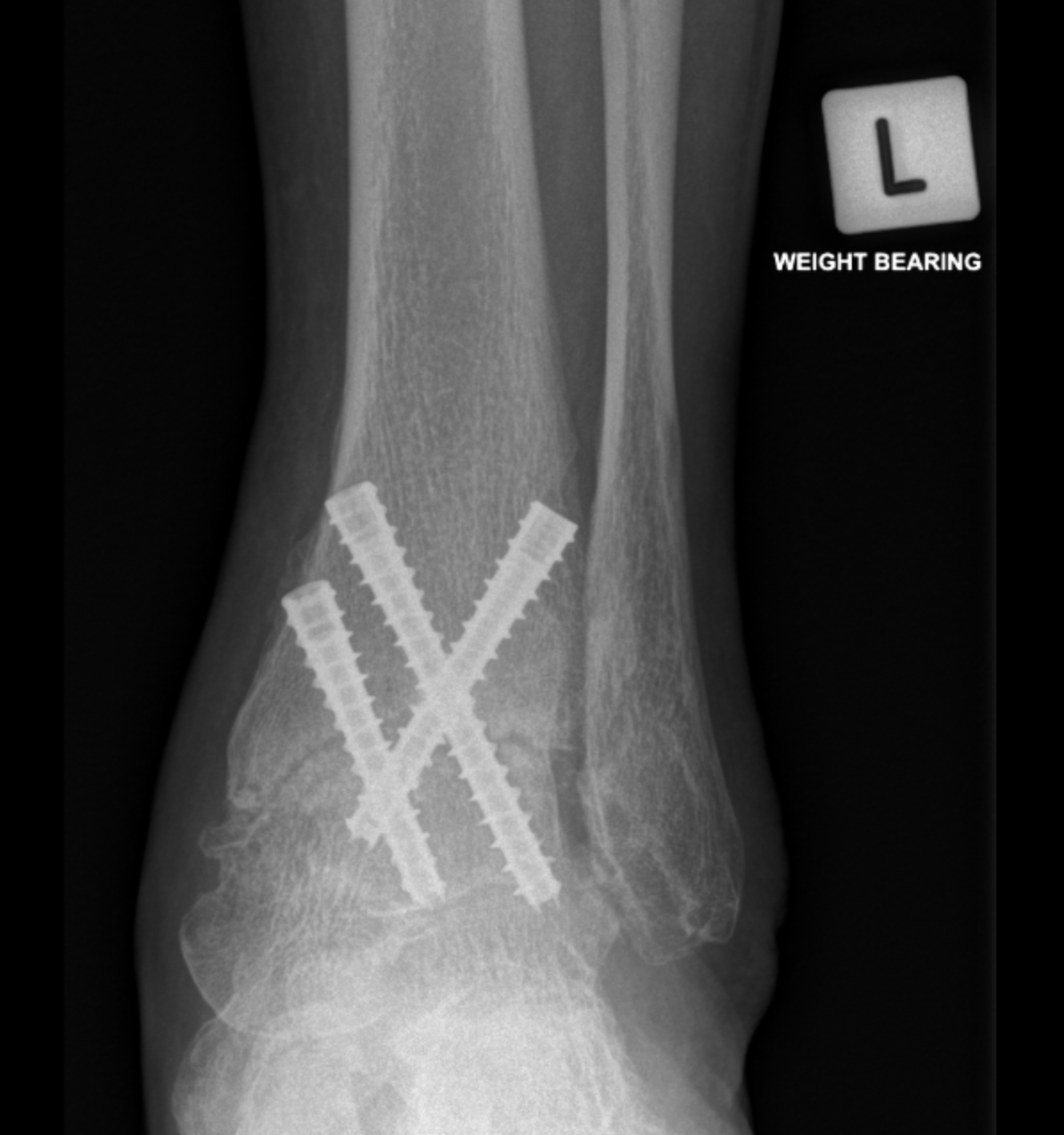What is an ankle fusion?
An ‘Ankle Fusion’ is a surgical technique commonly performed for ankle arthritis. The term ‘fusion’ relates to the joining of two bones, through removal of a joint.
The ankle joint itself is made up of the two bones in the lower leg (tibia and fibula) and the talus (large bone that connects to both the tibia and fibula). The talus is a unique dome shaped bone. No muscles attach to the talus, and it has the highest percentage of articular cartilage coverage of any bone in the body, approximately 60% of its surface area.
An Ankle fusion removes the arthritic joint surfaces of the tibia and the talus, and fixates these bones together.
Why perform an ankle fusion?
An ankle fusion is the gold standard surgical treatment of advanced ankle arthritis. Typically patients with advanced ankle arthritis have minimal movement of the ankle joint. What movement they do have, is often very painful. The purpose of an ankle fusion is to eliminate any arthritic pain and improve the quality of life for the patient. While the ankle joint no longer allows movement, there are several other joints in the hindfoot and midfoot that help compensate for this lost motion.

Ankle Fusion – Surgical technique
Every individual case needs a through assessment and management plan. There are several techniques available for achieving a successful ankle fusion. Dr. Smith will discuss all options available and determine which technique you are most appropriate for.
Arthroscopic Ankle Fusion
Keyhole portals are created at the front of the ankle joint. Utilising a tiny camera through one of the portals, specialised instruments are passed into the ankle joint to remove the cartilage of the ankle joint. Once sufficient cartilage has been removed, the lower end of the tibia is secured to the talus with the used of 2-3 compression screws.
Anterior Ankle Fusion
This technique involves making a midline incision over the front of the ankle joint. Once the joint is on view, the diseased cartilage is removed from the end of the tibia and talus. These bones are secured together with the combination of a locking plate and screw construct.
Transfibular Ankle Fusion
This technique is often reserved for patients with significant deformity secondary to their arthritis. An incision is created on the lateral (outer) aspect of the ankle joint. The lower end of the fibula is removed to gain access to the ankle joint. Ankle joint preparation and fixation is similar to above techniques.

Ankle Fusion – Recovery
Regardless of which technique is used to achieve an ankle fusion, recovery times progress along a similar path. Patients are typically placed into a splint for the first 2 weeks, and then into a boot, once the wounds have healed.
During the first 6 weeks, no weight is to be put through the foot. A set of crutches, walking frame, or knee scooter will be provided for this. From 6 weeks, progressive weight bearing is allowed, and the walking aids are removed completely at 12 weeks. Serial xrays are performed to ensure successful ‘union’ is achieved.
You will be required to take a blood thinner during this period of time to reduce the risk of you developing a blood clot.
Once successful union has occur, normal activities can be recommenced.


